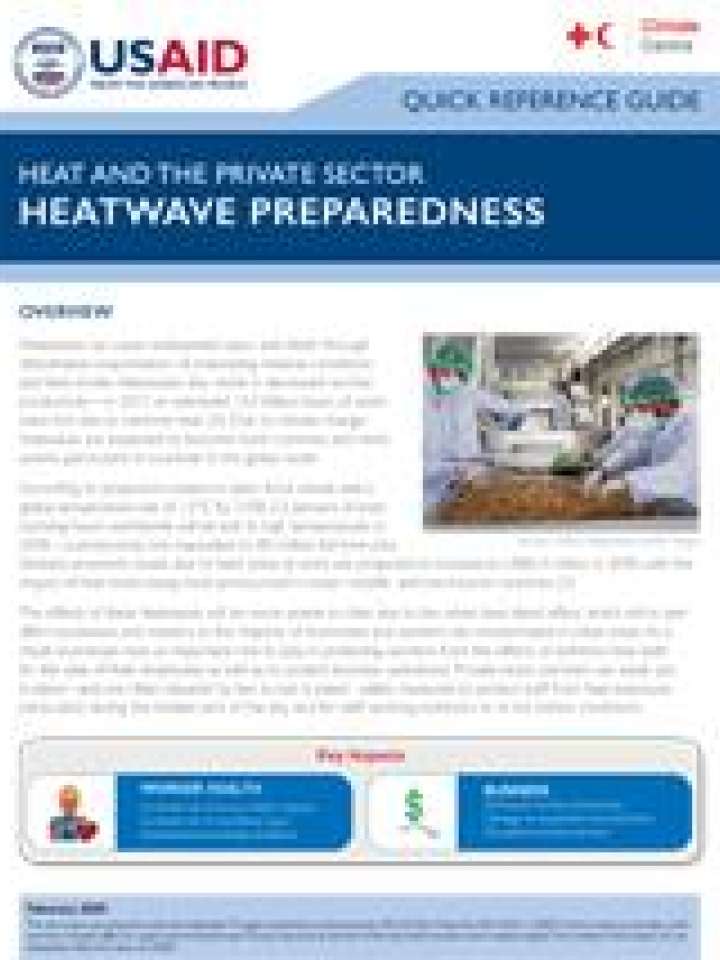Heat and the private sector: Heatwave preparedness
In 2017, an estimated 153 billion hours of work were lost due to extreme heat. In a changing climate, heatwaves are expected to become more common and more severe, and it is estimated that by 2030, 2.2 percent of total working hours worldwide will be lost to high temperatures—a productivity loss equivalent to 80 million full-time jobs. Similarly, economic losses due to heat stress at work are projected to increase to US$2.4 trillion in 2030, with the impact of heat stress being most pronounced in lower–middle- and low-income countries.
Businesses have an important role to play in protecting workers from the effects of extreme heat, both for the sake of their employees and to protect business operations. This quick guide from the Adaptation Thought Leadership and Assessments (ATLAS) project—developed in partnership with the Red Cross Red Crescent Climate Centre in support of the Climate Centre’s Heatwave Guide for Cities—details the risks heat poses to worker safety and business operations, and provides actionable recommendations for business owners and managers to reduce heat risk in the workplace.
Click here to view the corresponding Heatwaves in Cities infographics series.
To view the quick guides in the Heat and Urban Environmental Issues series, click here.
Explore further
